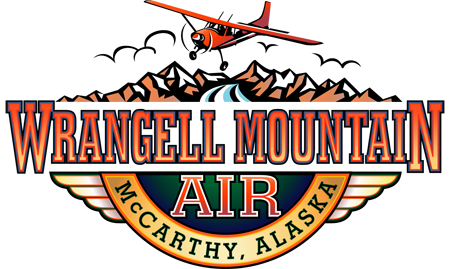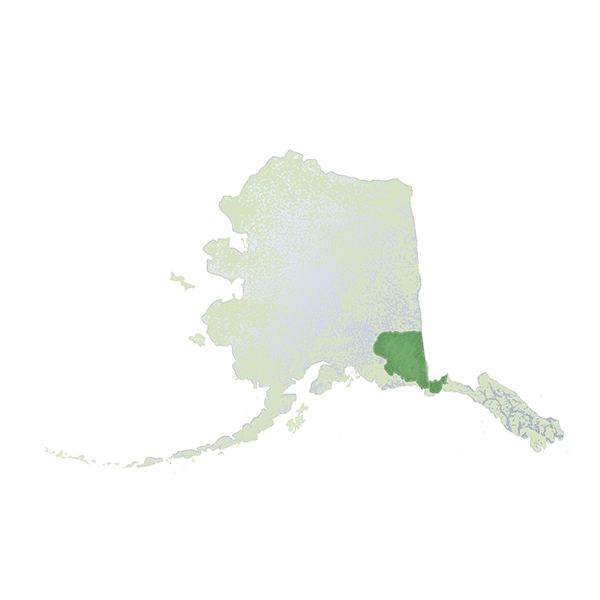About Wrangell - St. Elias National Park
the world’s largest protected wilderness
Photo by backcountry passenger and photographer, Jacob W. Frank.
America's Largest National Park
Wrangell-St. Elias National Park is located in the Eastern region of Southcentral Alaska. It is bordered on the east by Canada’s Kluane National Park which, together with the Wrangell-St. Elias National Park, is the world’s largest protected wilderness. This park is easily accessible by air, or if driving, by road via the Edgerton Highway and McCarthy Road. Wrangell-St. Elias encompasses 20,000 square miles of mountain wilderness, is a land of uncommon beauty, and one of the least visited national parks in the country.
Flying in Wrangell-St. Elias National Park Eclipses Flight Elsewhere
Photo by backcountry passenger and photographer, Jacob W. Frank.
Wrangell-St. Elias National Park, the largest park in the United States, is 6 times the size of Yellowstone!
It contains 4 major mountain ranges: Wrangell, St. Elias, Chugach, and the eastern part of the Alaska Range.
This park is home to 9 of the 16 highest peaks in the United States.
Wrangell-St. Elias has the largest concentration of mountains over 14,000 feet in North America and is home to the largest glacier system in the US.
Mount St. Elias is the second highest peak in the United States, at 18,008 feet (5,489 meters) and its entirety can be seen as it rises out of the sea.
Mt. Logan at 19,850' (6,050 meters), Canada's highest peak and the second highest peak in North America, is just 30 minutes by air from McCarthy at the eastern end of the Bagley Icefield.
Mount Wrangell is one of the largest active volcanoes in North America, at 14,163 feet (4,317 meters),
The Nabesna Glacier is the longest non-polar valley glacier in North America, at approximately 80 miles (129 kilometers),
The Malaspina Glacier, larger than the state of Rhode Island, is the largest non-polar piedmont glacier in North America.
The Hubbard Glacier is one of the largest and most active tidewater glaciers in North America.
Local Weather Patterns
Photo by backcountry passenger and photographer, Jacob W. Frank.
The region has long been known for its favorable weather. Summers in the park are often warm and sunny, with daytime temps ranging from 60s - 70s (15-21C) for most of the summer and nighttime temperatures hovering around the 40s (4C); by the end of August freezing temperatures are possible. The backcountry is cooler than McCarthy, especially in the glaciated southern area of the Park. Glaciers, not surprisingly, have a chilling effect. Rainfall is sparse, just 11 to 14 inches (28 - 36cm) per year. By mid September the precipitation can start to change to snow, though snowfall is possible at higher elevations at any time of year. In September snow accumulation of several inches is possible. Pilots are very cautious when scheduling late season backcountry flights in Wrangell-St. Elias and will avoid higher elevation airstrips.
Because of the park’s extensive size, Wrangell Mountain Air is usually not limited in showing our guests the surrounding beauty; though inclement weather may prevent flight in one area, the opposite direction may be clear, providing a backdoor to flying adventure. The combination of ease of access, incredible natural beauty and great summer weather make Wrangell-St. Elias National Park a great destination for your Alaskan itinerary.
McCarthy & Kennecott, Alaska
These frontier towns came to play a major role in Alaska's history just after the turn of the century. Copper was discovered on Bonanza Ridge and that finding led to the development of the famous Kennecott mines. The boom town of McCarthy sprung up 5 miles downhill and became the miners' recreation town with saloons, gambling, and a red-light district. In 1938 the Kennecott mines closed and left two ghost towns right in the middle of what was to become the largest and most spectacular national park in the United States.
Today, they offer visitors a unique Alaskan experience and make for an excellent jumping-off place for more extensive exploration of the wilderness backcountry. In McCarthy and Kennecott you'll find lodges, B&Bs and a range of guided activities including glacier hikes and river rafting. There are restaurants, gift shops, espresso, and gourmet ice cream for those warm summer days. There are several shuttle services* to take you the four miles (20 minute ride) from McCarthy up to Kennecott. (Their prices and schedules are usually found posted at the footbridge and around the two towns.) Once there, swing into St-Elias Alpine Guide's office to book a two-hour guided tour of the 14 story mill building and historical town of Kennecott.
*As always, customers flying with Wrangell Mountain Air enjoy complementary transportation to and from the airport.






